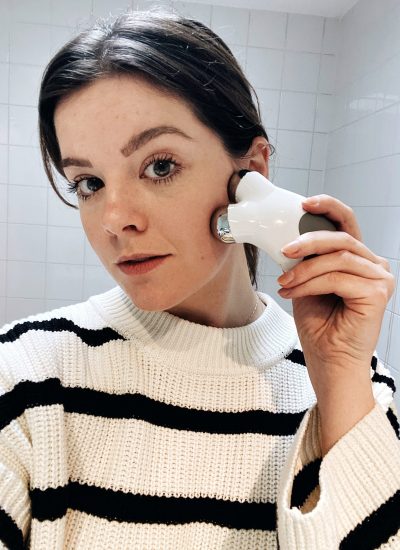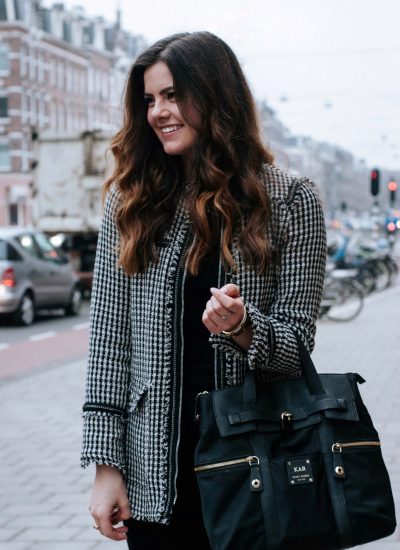
If you haven’t heard of it yet, Spinning Out is one of Netflix’s newest drama series. And it centers around one of my favorite topics: figure skating. The show features Kat, a 21-year-old figure skater making a comeback after a devastating injury. The show is full of so much binge-worthy drama – from fights and breakups to mental illness and family struggles.
To give you a little background, I grew up entrenched in the world of figure skating. My first steps on the ice came at the age of 4, and I never looked back. In fact, I grew up so passionate about figure skating that I left college my sophomore year to train full time as an ice dancer. I competed at the national level and trained side-by-side with Olympians. I actually have a few former training mates who have been at the past two winter games. You can read more about my relationship to figure skating in this post.
Training full-time at such an elite level gave me really incredible insight into the sport of figure skating. Which is why I found Spinning Out so interesting. It’s true that figure skating movies and TV shows rarely get the details right. So I’m here to give you a figure skater’s review of Spinning Out – what’s right, what’s wrong, and what’s downright crazy.
Hope you enjoy! Leave a comment below if you’ve watched the show!
Xx, Kelsey

What’s right?
The first thing I have to say in my figure skater’s review of Spinning Out, is that they must have had a good consultant on the show. There are a surprising number of details that they got correct. The only time I’ve seen this many details about figure skating done well was in I, Tonya.
Costumes – A lot of the costumes in the show were inspired by real-life competition dresses. The most noticeable is Kat’s Romeo & Juliet dress. It’s actually a knock-off of Tess Virtue’s costume at the 2018 Olympics.
Training schedule – It’s true that figure skaters train a LOT. The fact that Serena is home-schooled is pretty accurate. Many high-level figure skaters are home-schooled or go to special schools for athletes that allow them to train for multiple hours a day. I personally chose to go to public school, but I had special permission to start my day one class period late so I could train in the mornings.
Competitions – They actually got a decent number of details around competitions correct. The competition track does go Regionals > Sectionals > Nationals. What isn’t correct is that Senior level pairs and ice dance don’t compete at Regionals. There are so few teams at that level, that everyone automatically goes to Sectionals.
Rink drama – It’s no secret that figure skating is full of drama. I really think that’s the case with the majority of individual sports (hellllo gymnastics). The catty parents and back-stabbing young competitors aren’t a far cry from the truth. Of course, this doesn’t mean you shouldn’t enroll your young child in figure skating lessons. The drama happens when you get to a higher level within the sport.
The cost – Skating is a super expensive sport. Skates, ice time, coaching fees, costumes, travel – there’s quite a bit of money that goes into the sport. It’s not uncommon for parents and families to give up a lot in order to fund their skater. I know Adam Rippon was featured in this article speaking about how his skating costs around $120K a year.
The mental illness – Honestly I never dealt with anyone who I knew had bipolar when I was skating. But it is true that mental illness isn’t talked about in figure skating. Growing up in the sport I saw more than a few eating disorders and a lot of confidence and body image issues. The sport is built on the idea of reaching “perfection” and mental illness doesn’t fall within that ideal. It was refreshing to see mental illness brought to light in the context of figure skating. Hopefully it helps break the stigma.

What’s wrong?
Of course, this is my favorite part of my figure skater’s review of Spinning Out. It provides and opportunity to share more truth about figure skating. The sport is one that doesn’t get a lot of attention outside of the Olympics, so there are a lot of misconceptions.
The partying – Seriously competitive figure skaters (like the ones going to Nationals) aren’t going to be partying. Figure skaters get the worst ice time, so we always have to be on the ice by 6am since we have to be done before hockey starts at 10am. There’s just no way you can party like they do in Spinning Out and still make it to practice. Plus, serious athletes are so focused on training and competing, they’re not about to ruin it by drinking and partying during competitive season. Of course, that doesn’t mean there aren’t parties. They just happen during off-season, the few months between the end of the competitive season and the start of serious training for the next.
The drugs – Highly competitive figure skaters get surprise drug tested. An official could just show up at your house at any hour of the night and make you pee in a cup. There’s a very strict list of medications you can and can’t take. No one would risk losing their international assignment for the chance to do some drugs on a random weekday.
The skating – Ohhhhh I couldn’t do a figure skater’s review of Spinning Out without mentioning the skating. This is by far the hardest part of creating a figure skating movie with professional actors. Kat actually has four different body doubles – two for her singles skating (jumps, spins) and two for her pairs skating. If you look closely, you can tell the body differences when they switch between doubles. But the part that’s the hardest to watch is when the actors themselves perform opening sequences or a few steps. They’re clearly so uncomfortable and ungraceful (as ANY beginner skater would be!). The minute they switch to the skating double, things become so much smoother and more artistic.
Changing programs before competition – This part actually made me laugh out loud. Yes, skating is a numbers game as much as an artistic sport. But coaches work tirelessly throughout the year to ensure that programs are built to maximize points within the skater’s rang of ability. Skaters then train that same program for months at a time – until they can do it in their sleep. There’s no way in hell anyone would change the program right before competing, or even a few days before.
The injuries – In the first episode Justin’s partner stabs herself through her skate with her blade. I can’t even tell you how unrealistic this is. Skates are built with layers and layers of leather. I competed as an ice dancer, where close footwork means you’re regularly kicking yourself and your partner. Even on a particularly hard kick you won’t do more than take a chunk out of the outer leather.
The other injury that is ridiculous is Kat’s initial fall on her triple toe. In reality, a skater of her level wouldn’t be taking hard falls on her head like that. In fact, pairs skating is where the majority of those major injuries come from. Realistically the story would have gone – pairs skater splits her head open and decides to make a comeback as a singles skater.
The one injury that does ring true is Jenn’s. Hip injuries are pretty common in skating. Often times when a skater retires from the sport it’s actually due to an injury like that.
The ages – Neither skater’s age is out of the norm. I competed my last two years at 20 and 21. But by that age I also knew there was no way I was going to the Olympics. I was already too late for that. At 16 Serena would already be late for the Olympic track in singles. Most Olympic level singles skaters are already winning nationals and competing on the international stage by 16. Some are even winning the Olympics by that time. Kat’s age is also late for just starting pairs. It’s so unlikely they would qualify for the Olympics at their level of experience. It takes years and years to learn the switch from one discipline to another. And it only gets harder as you get older.








